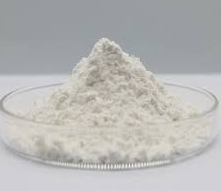Properties of Sodium Xylene Sulfonate (SXS)

Outside of Iran, it has become customary for many household hygiene products to be sold as concentrates so that the consumer can dilute them with water before use. With this method, a significant amount of packaging volume has been reduced, and in this way, both the cost of packaging, the cost of transportation and maintenance, and finally, the number of pollutants that are ultimately thrown away with packaging or related containers as waste are reduced. Aqueous concentrate solutions are detergent liquids for washing clothes, washing fine fibers, hand washing, and for dishwashers that are sold with a high concentration of active ingredients. These liquids, if diluted by the consumer according to the manufacturer's instructions, will have the same concentration and desirable effects as normal products. The producer of such thick liquids faces many difficult problems. Among these problems, we can mention the regulation of optimal flow and physical stability of the liquid. Normally, in concentrated liquids, by increasing the concentration of surfactants, builders, electrolytes, and other liquid components, their fluidity decreases so that the viscosity of the liquid exceeds 10,000 megapascals, and as a result, "pouring" or it becomes difficult for it to flow from the corresponding container. On the other hand, liquids that flow easily do not have sufficient viscosity and do not have a favorable effect when diluted by the consumer, and are not attractive products. Also, the presence of a high concentration of surface-active substances causes the molecules of these substances to gradually stick together until finally areas or layers separate from the rest of the ingredients of the detergent are formed and cause turbidity or even biphasing. Sometimes the result is that the viscosity of the liquid increases unfavorably. In order to prevent such phenomena, sometimes they turn to inorganic compounds such as swelling soils or alumina, and sometimes to the use of organic materials such as resins, polymeric or cellulose materials. But most of these materials often double the problem. Another way is to use materials that have hydrotropic properties. Hydrotropy is a property during which the solubility of solutes in water is increased, the cloud point is lowered (cloud point depressant) and the fluidity is increased or the viscosity of the solution is lowered. Among these compounds are types of sulfonic solutions of aromatic acids with short aliphatic chains such as sodium benzene, toluene, xylene isomers, and cumene sulfonates that toluene derivatives for the production of powder detergents and xylene and cumene derivatives for the production of concentrated liquids have found wide applications. Sodium xylene sulfonate or SXS is offered in two ways in the international market: 1- 30 or 40% solution in water with pH 7-10 in suitable barrels or as a powder of 95% active substance. Farzin Chemical Company now has the technical know-how to produce both the usual forms of this hydrotrope substance.
